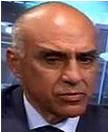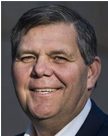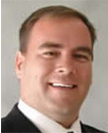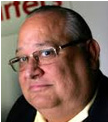By Mark Gutglueck
Mirroring the disarray in its Democratic counterpart, the San Bernardino County Republican Party is on the brink of crisis as the 2018 election year advances, and internal and external power struggles have fractured what was once a resilient alliance that allowed the GOP to keep a grip on the lion’s share of the region’s municipal, state and federal elected offices even in the face of superior Democratic voter registration numbers over the last decade.
Last year’s change in the county party’s leadership and growing dissatisfaction with the political status quo together with the revival of an archaic and what some consider to be an unfair endorsement policy that confers a nearly unbreakable advantage on incumbents is resulting in the refusal of a significant number of deep-pocketed donors who have historically endowed the San Bernardino County Republican Party with the cash to open their checkbooks this year. In election cycle after election cycle those donations had allowed the Grand Old Party to outperform the Democrats, but with those funds drying up, the Republican’s grip on San Bernardino County may come to an end in 2018.
This year, in Assembly District 55 Scott Lebda, a Republican, along with two Democrats are challenging incumbent Republican Phillip Chen. In Assembly District 42, Gary Jeandron and Andrew Kotyuk, who are both Republicans, along with one Democrat and one Green Party member are challenging incumbent Republican Chad Mayes. In California Congressional District 8, Republican Tim Donnelly and three Democrats are challenging Republican incumbent Paul Cook. In the City of San Bernardino, Republican John Valdivia and five Democrats are challenging Republican incumbent Carey Davis for mayor. In San Bernardino County’s Second District, two term Republican incumbent Janice Rutherford is being challenged by Republican 40th District Assemblyman Marc Steinorth. And incumbent Republican district attorney Mike Ramos is being challenged by Republican Jason Anderson. In all cases, the incumbents have won the local party endorsement.
In distant years past, the San Bernardino County Republican Party, which is ruled over by the San Bernardino County Central Committee, had a policy of adhering to the so-called Eleventh Commandment, which is an admonition against Republicans speaking ill of one another. At that time, California’s primary elections were structured so that members of the same parties would vie against each other, voters were eligible to vote only in the race featuring candidates from their own party, and the winner of each of those intraparty races would then compete against all the other primary winners for that particular elected post. The theory and approach of the Republicans then was that the various competing Republican candidates would fight it out for primacy without interference by the party in June, and once a winner emerged from the primary vote, the party would then swing in full behind the victor in his or her electoral effort against the chosen Democrat and the perennially less-viable victors from the other minor parties such as the Greens, Peace and Freedom, American Independent Party, and so forth. This provided the Republicans with the opportunity to choose a candidate favored by either a plurality or majority of the Republicans in that given electoral district and allowed the party to husband its financial resources to be used against the Democrats in November rather than squandering that funding on a potentially damaging battle between Republicans.
The atmospherics around the primary elections changed somewhat as did the general Republican Party attitude when California went to an open primary system in which candidates from all parties vie against one another in June and the top two finishers – and only those two – then move on to the run-off in November. Even prior to that, in the early-to-mid 2000s under the chairmanship of Bill Postmus, the San Bernardino Republican Central Committee had gravitated toward allowing party money to be used in promoting Republican candidates in the primary races if those candidates had found favor with a sizeable majority of the central committee’s executive board. The executive board generally consisted and yet consists of a set of central committee members handpicked by the leadership and ratified by the committee membership. The change to allowing one Republican to be endorsed over another was not without controversy, as some members of the central committee as well as party members in general did not believe it wise for money raised by contributors to the Republican cause to be used in campaigns against Republicans. Nevertheless, as the San Bernardino County Republican Central Committee at that time had come to be dominated by office holders and their personal associates or employees, the policy of the party favoring some Republican candidates over other Republican candidates was instituted. One manifestation or extension of that policy was similar favoritism being shown to incumbent Republicans over Republicans seeking to challenge them. Under Postmus’ leadership, the San Bernardino Central Committee established the custom of simply endorsing any incumbent Republican officeholder in the county for reelection without a vote, unless 60 percent of the central committee members protested making that endorsement ahead of time. In this way, even if a challenger was able to get a greater degree of support for his or her candidacy than the incumbent, he or she could still lose in the effort to obtain the Republican endorsement if the incumbent managed to keep the support of at least 41 percent of the central committee. Under the policy, even if there was sufficient protest to deny the endorsement to the incumbent, the county party endorsement did not go automatically to the challenger. Rather, a successful protest would trigger a discussion and debate over the granting of an endorsement in which the preferences of the executive board held greater weight than the committee’s membership as a whole, with the possibility yet remaining that the incumbent might still be endorsed or that no endorsement would be made.
That policy remained throughout Postmus’s tenure as chairman of the central committee and for several years thereafter. Several years after Postmus and most of those who had been members of his political team departed from the central committee, a change in the policy was made so that a protest of 50 percent of the central committee members to the endorsement of an incumbent would prevent that endorsement from being automatically made. Three years ago, however, the policy of requiring a 60 percent protest to prevent the automatic endorsement of an incumbent was reinstituted.
With the dawn of the 2018 political season, that policy turned into something of an issue for a sizeable element of the local Republican electorate, as growing dissatisfaction with two of San Bernardino County’s Republican incumbents, district attorney Mike Ramos and supervisor Janice Rutherford, has reached the point where more than fifty percent of the members of the central committee are opposed to their reelection. In the case of Ramos, 57 percent of the central committee favors his opponent, Jason Anderson, a former prosecutor who worked under Ramos in the district attorney’s office who also once served on the Ontario City Council. Rutherford has even less support than Ramos, as 59 percent of the members of the central committee have a preference for Marc Steinorth, the incumbent 40th District Assemblyman who has opted to move down the political pecking order to run for Second District San Bernardino County supervisor. Ultimately, the will of the majority of the elected leadership of the county Republican Party was thwarted when, at its nominating convention held last Saturday, April 14, at the Holiday Inn in Ontario, both Ramos and Rutherford garnered the local party endorsement with something less than half of the central committee’s members supporting them.
Behind that circumstance lies a degree of intrigue which extends back to the Postmus era and which has been sporadic ever since, as many of the members of the committee who also hold other elective office have used their proximity to the center of local party power and the leverage this implies to promote themselves, sometimes in ways that have been contrary or detrimental to the party’s interests.
In 2005, Postmus, using the pretext that getting a quorum of the committee’s members together at the regular central committee meetings was too daunting because of the sheer size of 20,105-square mile San Bernardino County and the great distance that some members had to travel to the meetings which generally were held in the county’s southwestern corner, proposed conferring upon the committee’s executive board the power to act with the full authority of the central committee itself without requiring the full membership to vote. Once the full committee agreed to this change in the bylaws, Postmus, then the chairman of both the central committee and the county board of supervisors, and his then-ally, Paul Biane, then the vice chairman of both the central committee and the board of supervisors, moved at once to consolidate their power within the county Republican Party. In addition to taking up a position on the executive board themselves, they succeeded in having the remainder of the positions on the board, with a single exception, filled by members of the committee who were employed on their supervisorial staffs. In this way, Postmus and Biane were able to dictate whom the county party would endorse and how the money in the county party’s coffers was to be spent, whom the party would provide monetary support to, and how much. At that point, the Republicans enjoyed the advantage of having a plurality in terms of voter registration in the county, such that Postmus and Biane, and Postmus in particular, had become the region’s kingmakers, capable of promoting their own choices for office and in a position to dissuade others who might stand in their choices’ ways to stand down, able to control who would be nominated, who would prevail at the primary election level within the party, and able to vector enough money to their handpicked candidates in the November elections to virtually assure the election of most if not all of their team, whose members were then expected to pay homage to them and support their political machine in its future political machinations.
Postmus in 2006 opted to run for county assessor, the most powerful taxing authority in the county, which gave him the virtual autonomy to raise or lower the assessments of the property, machinery, equipment and buildings of the county’s landowners and businesses, giving him even further reach and control, augmenting his leverage in corralling political donations from those with deep pockets who had a stake in staying on the good side of the official setting tax rates. After Postmus left the board of supervisors, Biane stepped up from being board vice chairman to being chairman. Shortly thereafter, Biane moved up to become chairman of the central committee as well. In 2008, Postmus found himself beset with scandal after scandal, and by 2009, he imploded under a series of revelations of drug use, political patronage in which he was found to be awarding contracts to and hiring his political cronies who had no skill or experience in delivering the services they were paid or hired to provide, misappropriation of public funds, conflicts of interest, fraud, bribery and allowing the assessor’s office’s personnel, equipment and facilities to be used for partisan political purposes. That scandal for a time threatened to subsume and then eventually did envelope Biane, who had been one of Postmus’ closest political associates, and chairmanship of the central committee passed into the hands of two caretakers, county supervisor Gary Ovitt, who himself went on to become the chairman of the board of supervisors as well, and then Upland City Councilman Ken Willis.
In 2009, Democratic voter registration in San Bernardino County eclipsed Republican voter registration, and the county Republican Party appeared to be headed toward serious trouble, even as much of the rest of California was falling under the increasingly firmer control of the Democrats. Nevertheless, given the tendency of Republicans to show up at the polls in greater numbers than Democrats, the willingness of Republican donors to contribute money in vaster quantities than donors to the Democrats, the tighter control of the county party apparatus among Republicans than the corresponding control among Democrats, and the more coordinated and energetic electioneering efforts exhibited by Republicans, the Republicans managed to hang on to power in the lion’s share of the county’s political jurisdictions, despite the ever-growing Democratic voter registration numbers. Eventually, Willis would be succeeded as county central committee chairman by Robert Rego, a true believer in the GOP and its causes. Rego was devoted to minding the nuts and bolts of electioneering, raising money, building a war chest and husbanding those financial resources. He was philosophically opposed to using party money in counterproductive expenditures to support one Republican vying against another in the primaries. Instead, he believed whatever money the party had should be used to support the Republican candidate who had earned a berth in the November race against his or her Democratic opponent. Rego further instituted reforms in how the party operated and set higher expectations with regard to how Republicans were expected to comport themselves in an effort to undo the damage that had been inflicted upon the party by the Postmus-era scandals.
By 2012, Jim Brulte, one of the more successful of Republican office holders from San Bernardino County at the state level over the previous half century but whose career had been abbreviated by term limits in 2004, was itching to get back into the political fray after working for nearly eight years as a lobbyist.
The November 2012 election had been the most resounding electoral defeat the GOP had ever sustained in California, one of catastrophic proportion in which the Democrats captured well over two-thirds majorities in both houses of the legislature, locking in a Democratic advantage at the statehouse while the governor’s mansion was occupied, and sway over the state’s administrative function was held, by Jerry Brown, a Democrat. The legislative supermajority provided the Democrats with the ability to raise taxes without the support of any Republican votes and gave the GOP no prospect of preventing a faction of the Democratic Party from prevailing in its move to eliminate any remaining tax breaks for businesses.
Though state legislative office was not open to him and he was less than enthusiastic about running for office at the city or county level, Brulte nevertheless set for himself the rather daunting goal of remaking the foundering California Republican Party into a viable political entity once again, and with little in the way of resistance he set about succeeding Tom Del Beccaro as California GOP chairman. His game plan was to take control of the party’s state political machinery and employ it in such a way to reestablish Republican relevance in the nation’s most populous state. As a longtime Republican elected official chosen by his party colleagues to leadership positions in both State Senate and Assembly caucuses, Brulte had a command of the methods and science of campaigning and in horse-trading among politicians and business interests. Assuming he could rely upon and build from a toe-hold in the portions of California where Republicans were yet in ascendancy, Brulte hoped to regain ground that had been over the last several decades lost to the Democrats. He had visions of identifying those areas where the Democratic majority was not so overwhelming that they might prove vulnerable to a GOP comeback. His approach called for creating well-funded local political machines capable of targeting and reaching that portion of the politically inactive element of the population that might embrace the values and core beliefs of the Republican Party, and then carrying out registration efforts augmented by ploys to drive those voters to the polls in sufficient numbers to take legislative seats away from the Democrats. It was this formula of concentrating Republican monetary might in selective areas so as to outhustle the Democrats that Brulte thought might prove the salvation of the California Republican Party.
Simultaneously, Curt Hagman, was faced with the prospect of being termed out of the Assembly at the end of 2014. The one-time mayor of Chino Hills, Hagman had been elected to the California Assembly in what was then the heavily Republican 60th District lying at the confluence of southwestern San Bernardino County, northeastern Orange County and southeastern Los Angeles County in 2008. He was handily reelected there in 2010 and reelected in the equally heavily Republican redrawn 55th Assembly District in 2012 that covered roughly the same geographical area as the previous 60th District. But under California’s term limits in place at the time, one could serve no more than three terms in the Assembly. To keep himself in the political game, Hagman had to move on, either laterally, or upward, or downward. A run for California State Senate was not possible for Hagman in 2014, as the four-year election cycle in Senate District 29, which encompasses Chino Hills, would not come up until 2016.
Ultimately, he set his sights on the Fourth District San Bernardino County Supervisor’s post. To make that transition, however, would require some doing, as it was already occupied by a fellow Republican, Gary Ovitt, the one-time mayor of Ontario who had acceded to the supervisor’s post in a special election in 2004 and was convincingly reelected in 2006 and 2010, even as the district was growing more and more Democratic in terms of voter registration. Moreover, what appeared to be a strong Democrat, then-incumbent Congresswoman Gloria Negrete-McLeod, likewise had her eye on the post.
To achieve his end, Hagman had to pull off a political hat trick. His first move was to befriend Brulte as he was moving to become the chairman of the California Republican Party. Having formed an alliance with Brulte, Hagman then moved to depose Robert Rego as the chairman of the San Bernardino County Republican Central Committee. That undertaking was fraught with risk. Rego’s stewardship of the county party had been exemplary by most standard metrics. He had kept the Republican Party in ascendancy in the county, despite the registration advantage the Democrats had taken over the Republicans in 2009 and which they were continuing to widen. As an ex officio member of the central committee by virtue of his being an incumbent elected official, Hagman was able to quietly buttonhole other committee members and lobby for the promotion he was angling toward. Using cunning, stealth, tact and politesse, not to mention promises to members of the committee, Hagman outmaneuvered Rego. Rego yet had his supporters on the committee who recognized the yeoman’s work he had done and was continuing to do for the party in the county, and there was a real prospect that in a head-to-head contest with Hagman for the chairmanship, Rego would prevail. Nevertheless, through an arrangement with Brulte, Rego was offered an important role in the party both locally and statewide down the road if he would simply agree to step aside at the county level. In this way, Hagman and Brulte managed to ease Rego out of the chairman’s spot, preserving the upside of Rego’s direction of the party to that point, by which the Republicans in San Bernardino County turned out at the polls in far greater numbers than their Democratic counterparts despite the burgeoning Democratic registration countywide. Instead of making an enemy of Rego, Hagman to some degree managed to co-opt him. Rather than turning on them, Rego continued to assist Hagman and Brulte in the party’s first order of business, which consisted of convincing donors that they should continue to stock the party’s coffers with money.
From his enhanced position as county party chairman, Hagman then prevailed upon Ovitt to go quietly into the good night and not seek reelection. Negrete-McLeod had at that point firmly resolved to leave as congresswoman, she said, because she had grown to dread the bi-weekly California to Washington D.C. commute. She entered the 2014 race for Fourth District supervisor, as did James Na, another Republican member of the Chino Valley Unified School Board, and Ontario Councilman Paul Vincent Avila, a Democrat. In the June balloting, Negrete-McLeod prevailed, capturing 10,180, or 41.93 percent of the total 24,376 votes cast. Hagman pulled down 9,982 votes, of 41.12 percent; Na captured 2,313 or 9.53 percent, and Avila polled 1,801 votes or 7.42 percent.
With Katarina Kolcheva as his official campaign manager and Mike Spence as his primary campaign advisor with overriding authority relating to the campaign, Hagman and his political team put on a spirited and aggressive effort against Negrete-McLeod in the November election campaign. Despite Negrete-McLeod’s advantages in terms of far greater Democratic registration numbers in the Fourth District and her seeming upper hand, as an incumbent federal officeholder over Hagman as a state officeholder, Hagman eked out a narrow victory, 24,480 votes, or 52.11 percent of the 46,982 votes cast to Negrete-McLeod’s 22,502 votes or 47.89 percent.
For more than three years, Hagman chaired the central committee but in January 2017, Jan Leja, a former assemblywoman-elect, was elevated to serve as the chairwoman of the San Bernardino County Central Committee.
Explanations as to how Leja came to replace Hagman and why vary radically, depending upon which county Republican insider is offering the perspective. According to some, Hagman voluntarily stepped down to make preparations for his 2018 reelection bid. Others contradict that, saying Hagman skillfully used his position as county party chairman to control the county party infrastructure to get elected in 2014, and, given the serious challenge he will face in attempting to gain reelection this year in a head-to-head rematch with Negrete-McLeod, remaining as chairman and in a position of being able to vector party resources to assist his campaign at will would be of benefit rather than of hindrance to him. They say that he was deposed as chairman precisely because members of the party were concerned that in the role of chairman he would this year be devoting too much of his time and energy, as well as the county party’s resources, to his own reelection effort while neglecting other important races as a consequence. Others say there have been concerns about Hagman’s associations, including those on his political team as well as those working on his supervisorial staff.
All the same, there are concerns about Leja. A former mayor of the Riverside County city of Beaumont, she was elected to the California Assembly in 2000, where she was to represent a portion of both Riverside and San Bernardino County, but never took office. Rather, the Riverside County District Attorney’s Office took up an inquiry with regard to campaign finance irregularities she had engaged in during 1999. In what prosecutors said was an effort to ward off political opponents, she falsely reported receiving $146,010 in political donations that in fact did not exist. In filing campaign reports known as California Form 460s, Leja claimed her husband, Air Force Lieutenant Colonel Doug Leja, had provided her with a $50,000 loan, that she had received $37,685 in donations of less than $100 from more than 400 unidentified donors and that she had received $58,325 in donations of more than $100, all of which did not exist. After the district attorney’s office referred the case to the California Political Practices Commission and the California Attorney General’s Office, the charges, which were potentially chargeable as felonies, were reduced to two misdemeanor campaign finance violations, to which Leja agreed to plead guilty in addition to agreeing not to be sworn in as assemblywoman. Since that episode Leja has moved to Yucaipa in San Bernardino County and has gone to work as a field representative for Congressman Paul Cook, whose 8th Congressional District covers a significant swath of California including all of Inyo and Mono counties and a major portion of San Bernardino County, with more than 90 percent of its population in San Bernardino County. Leja is widely considered to be Republican establishment loyalist, who is devoted to maintaining the status quo. She counts among her political allies Cook, 42nd District Assemblyman Chad Mayes, 33rd District Assemblyman Jay Obernolte, Second District Supervisor Janice Rutherford and Brulte, for whom she worked as a staff member in the 1990s. Of some significance is with whom she will side, Obernolte or Mayes, to succeed Cook, who has been in Congress since 2013 and is now 75 and beset with health issues, when Cook retires. Cook appears to prefer Mayes as his heir, though Obernolte covets Cook’s congressional seat, and has been said to be working behind the scenes with Leja to put himself into position to assume it when Cook departs.
Leja’s commitment to the status quo was demonstrated when she outright resisted an effort to have the central committee’s policy of making automatic endorsements of incumbent Republican candidates attenuated by returning to the threshold of allowing a 50 percent protest vote to obviate the endorsement rather than the 60 percent requirement that was reestablished two years ago.
Brulte attempted to distance himself from the decision to put Leja into place as the central committee chairwoman.
“Although I live in San Bernardino County, I’m not a member of the county central committee,” Brulte said. “The county party is just one of 58 in the state. The state party does not get to dictate to county party. Actually, it is the other way around. I’m not involved in what the county party does anymore, and I’m not familiar with the decisions they make.”
In San Bernardino County, the leadership of the party and its policies, including that policy which extends to the ease with which an incumbent not favored by the majority of the party’s representatives within the county central committee can nevertheless obtain the party’s endorsement, is of some moment. The chairman has considerable control in mapping out the direction of the county party’s efforts and direction. As importantly, donors who become miffed over the county party’s refusal or inability to endorse and back a candidate who has the momentum of majority support can and have withheld their general support of the party. This year, a number of donors, among whom there are those who favor the candidacy of Steinorth over Rutherford and/or the candidacy of Anderson over Ramos, are now hesitating and reluctant or outright refusing to donate to the party at all out of concern their money will be directed to assisting a candidate or candidates they do not support. Estimates of the shortfall into party coffers as a result range as high as several hundred thousand dollars some six weeks prior to the primary election. The lack of funding available to the party could have a dynamic impact on other Republican candidates, who unlike Ramos and Rutherford are crossing swords with Democrats. The Republicans have traditionally used a major portion of that money in voter registration efforts and get-out-the-vote drives. If the Republican donors who are out of sorts over the Ramos and Rutherford endorsements do not come back into the Republican fold after the primary, the GOP’s ability to continue to defy the odds in San Bernardino County by means of vigorous electioneering efforts in the run-up to the November election to offset the growing Democratic registration numbers may be compromised.
Leja did not seem overly concerned about that prospect. She said the party’s endorsement policy was in place prior to her acceding to the county party chairmanship. “That was an executive board decision, and not one that I made,” she said. “That was instituted three or four years ago, long before I was the chair.”
She said she did not feel particularly motivated to change the policy. “I understand that there are some members who are not in favor of it,” she said. “They will support a policy when it benefits them but not when it doesn’t. Since I have been the chair, we have had a consistent and fair process for our endorsements. It has nothing to do with one particular race. The 60 percent threshold was put in place a few years ago, and it was affirmed recently by the executive board as part of our ongoing process. Our endorsement process standard has nothing to do with specific issues or people, since we confirmed the 60 percent requirement before we knew who would be running. You set your policy and procedure and then you work with what that is. Our goal is to follow a fair process that is applied to every race.”
Leja dismissed a suggestion that many in the party did not feel that one candidate having to get 60 percent of the central committee to object to the endorsement of another candidate to prevent that endorsement from automatically occurring to be fair. “I understand there are people who are not happy with the outcome, but as long as it is applied in every case fairly, that is all I can answer,” she said. “I am unaware of any threat by donors to withhold money. My understanding is there are donors lining up to support all of our party’s candidates, whether they were endorsed or not. Any particular candidate does not need the party’s endorsement to get support. There are independent expenditure committees being formed to support those other candidates [who were unendorsed by the county party]. We have a fair process and fair guidelines.”
Leja said efforts to change the policy ahead of the onset of the 2018 election cycle fell short. “It is not a fair way to conduct ourselves to simply change the rules to meet somebody’s needs,” she said. “All I can speak to is how our committee is run, how all issues are fairly discussed and how our members voted in setting the policy. There is not just one person in control. On these issues the central committee took a vote.”
Leja emphasized that even if sufficient protest votes against an automatic endorsement of an incumbent manifested, the endorsement would not simply revert to another candidate. “The endorsement is automatic, unless that 60 percent threshold is met,” she said. “But that just reopens the endorsement process. Even if the endorsement discussion is opened, that is not a guarantee the challenger is going to be endorsed,” she said.
Rego was among the central committee members who detected no skullduggery or factionary motive behind Leja’s elevation to the county party chairmanship.
“The shift from Mr. Hagman to Jan Leja was made only because Curt decided not to run again,” said Rego. “There was no alignment. It was more of a reach to members from Jan and Curt at that time, before he decided not to run, for support to be chair of the party. When he chose not to run again and made that announcement, Jan was the only other candidate. It was an election, not an appointment.”
Rego weighed in on the endorsement controversy now besetting the county party.
“Policies changed over the years,” he said. “In order to get the endorsement required a two-thirds vote. Then it was changed because the state GOP mandated that in state races such as the Senate and Assembly, with an exception for the local races, there had to be a two-thirds majority vote by the body to recommend to the state, or otherwise the state would not accept the recommendation for those state races. The body had a policy of not endorsing a Republican against another Republican with the exception of endorsing an incumbent. The party would not endorse an incumbent if there was a 60 percent vote against doing so. Later it was changed to a majority vote but then it was changed back to 60 percent. There are people who are not necessarily happy with whom the endorsements went to. Most candidates who don’t get an endorsement get upset. That is nothing unusual. There is always dissatisfaction on the part of some individuals with the results of the endorsement decisions. Typically, what happens is some people get exercised over the results and then they mellow down as time goes on.”
Queried about reports that straw votes taken by the central committee showed that Anderson had the support of 57 percent of the members and that Steinorth had the support of 59 percent of the members and whether those figures were consistent with the protest votes cast against Ramos and Rutherford, Rego said, “Quite frankly, that was disclosed in a closed session discussion of the items, so it would be inappropriate for me to discuss that since that was a confidential session.”
Asked if two of the party’s members who appeared to have the majority support of the central committee getting cut off at the pass in the endorsement process might have an impact on morale and enthusiasm for the party in general, a drawdown on donations to the party and an effect on the outcomes of some races, Rego said, “With respect to the elections, I don’t think how we decide on endorsements is going to have much of an impact on the voters. I suspect Republicans with money will do well and Republicans who don’t have money won’t do well. There are always some tight races. We will see.”
Pressed with regard to whether he perceives the majority objection within the central committee to two Republican establishment incumbents in top county government posts as an indication of a dangerous dissension within the county party that could contribute to or lead toward a fracturing of the coalition of donors, party functionaries and candidates that has allowed the Republicans to continue to outdistance the Democrats in San Bernardino County, Rego said, “It appears there are some individuals who would like to see a change. I don’t necessarily see that to be a groundswell at this point. I don’t know which seats we’re talking about in the leadership being subject to removal from those positions. I think there might be some discomfiture on the part of those who voted for a candidate that lost. I don’t see a problem with the leadership and I don’t think most feel that way. There are individuals in the central committee who may simply have some concerns about certain specific issues or candidates and they may make an effort to change the chairmanship or the executive board. Whether or not that succeeds will be based on the numbers. The June election may have an impact on the reorganization of the central committee.”
Meanwhile, across the aisle in the San Bernardino County Democratic Central Committee, there has been ostensible stability with regard to the top leadership position, as Chris Robles has been central committee chairman since 2012. But over the last year Robles has faced growing discontent over the poor performance of the Democratic Party, relatively speaking, in San Bernardino County, as in the 2014 and 2016 elections a multitude of Democratic candidates for county and state office in San Bernardino County have lost despite having voter registration numbers in their jurisdictions that heavily favored the Democrats. Robles since last May has survived four efforts, including three votes by approaching 30 of the Democratic Central Committee’s members, to oust him as chairman. Two of those votes succeeded, but were subsequently overturned when Robles contested their validity and appealed to the state party leadership. Nevertheless, the California Democratic Party in Sacramento has now been put on alert as to the discontent with Robles within the local party, and has taken note of the lackluster performance of Democratic candidates in San Bernardino County during each of the election cycles since the Democrats opened up a voter registration advantage over the Republican nearly nine years ago. They are listening to complaints from local Democratic activists that Robles, who by profession is a political consultant who manages campaigns for paying clients, has been too distracted to devote his attention to the campaigns of Democratic candidates involved in crucial contests against better-funded Republicans with more energetic electioneering support teams. There is a sense that the Democratic Party leadership in Sacramento will be closely monitoring both the campaigning that occurs in San Bernardino County this year and the November results to determine if under Robles the Democratic Party has not been achieving its full potential, and that he will be held accountable if the Democratic Party does not make substantial gains locally in this election cycle.
With the Democrats becoming more aggressive in their local electioneering efforts and the possibility that the traditionally smoothly functioning San Bernardino County Republican political machine might sputter because of a significant decrease in funding from donors, GOP fears are that the Inland Empire may no longer remain as one of the last bastions for Republican office holders in the Golden State.










